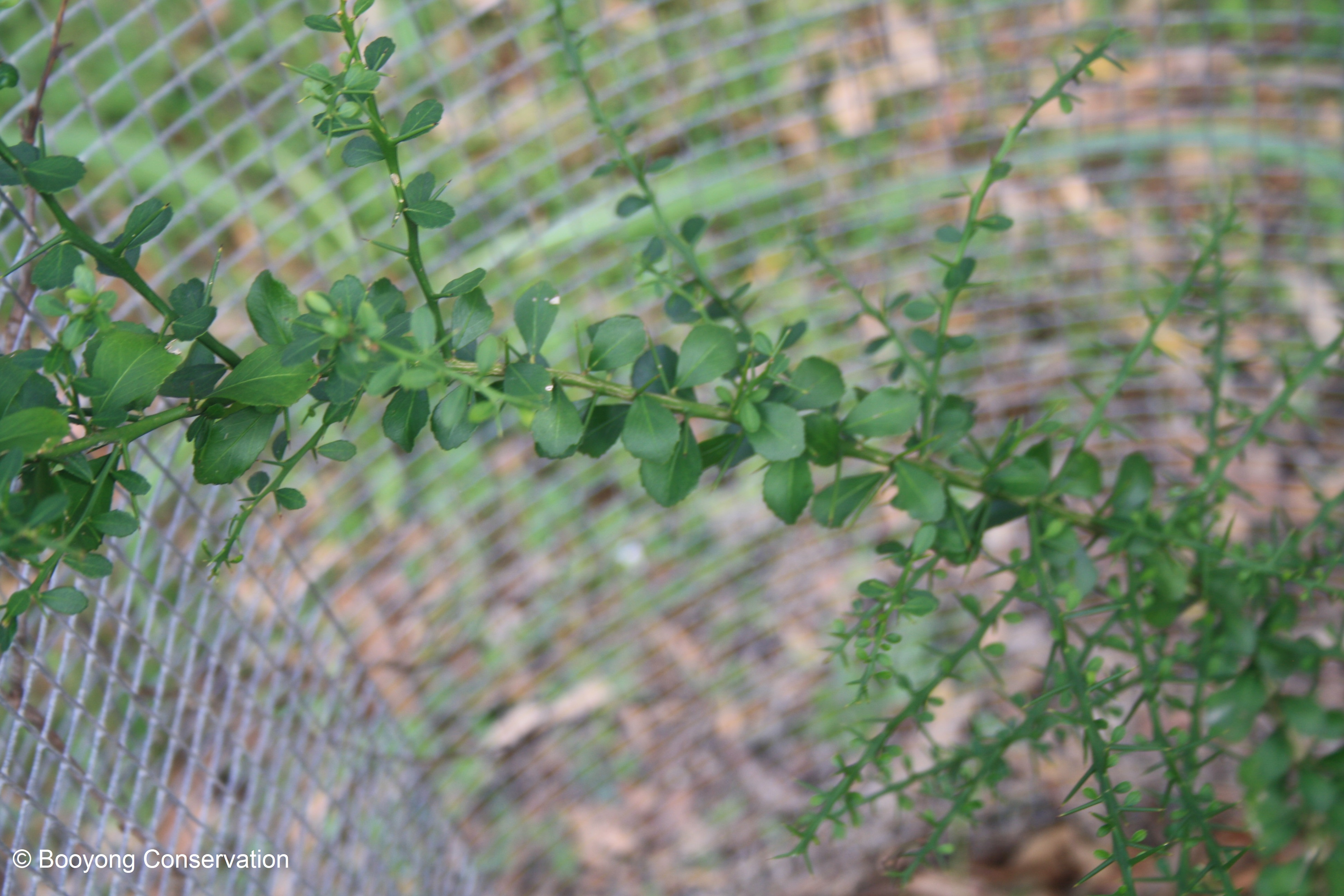We’re excited to have the Australian native finger lime or Citrus caviar or Pearl as it is commonly referred to growing at Booyong. When you look at the small leafed spiky plant within the food forest, it’s hard to imagine the popular and stunning crystal pulp that emerges from its fruit.
We were intrigued by the stunning colours available and had to purchase one for the farm. It is my wish to have several colours at Booyong over time and they will most probably be added to the Native food forest. We are uncertain of the current fruit colour but will certainly keep you posted.
Description: The finger lime is a hardy tree that occurs naturally in the understory of rainforest South East Queensland and Northern NSW. It can grow as tall as 10 metres high, however like all our fruit trees, we will prune the finger limes to a manageable height for ease of harvest. The leaves are small and thorny which will create the perfect habitat for small birds on the farm. On the north coast of NSW flowering starts in June and extends through to early October, depending on cultivar. During this time, we will expect small, white to pale pink flowers and fruits will be cylindrical and finger like, up to 100 mm long.
Tips for growing: Finger Limes grow well in the warmer areas of Australia and can be grown in full sun, from the ground or in a container. It will tolerate light frost when established, and as the flowers are small and delicate it prefers to be protected from the wind. According to the DPI website, soil should be well-drained and have a ph. of 5 – 6.5. Finger Limes are reasonably hardy and tolerate reasonable soil, requiring less fertiliser than other citrus plants. Depending on climatic conditions and cultivar, fruit mature between December and May, with the main harvest period occurring between March and May. Fertilising should be during the growing season, with a complete citrus food like dynamic lifter. Well-rotted compost and chicken manure can also be used; however, the Department of Primary industry recommend not over fertilising as fruit will fall.
In Spring and early summer watering is essential to ensure well-formed fruit. Mulching is also recommended to keep roots cool and protected, and like always ensure it does not touch the trunk to avoid collar rot. Finger limes don’t like weeds and grass beneath them.
Light pruning of an established tree after fruiting in Autumn is recommended to allow air circulation and remove dead wood and removing suckers from the rootstock is also beneficial.
Pests and Disease: Finger limes experience similar pests and diseases to other citrus plants including aphids, caterpillars, scale insects, bronze orange bugs, mealy bugs and grasshoppers.
Harvest: We would expect fruiting to occur sometime between December and May, depending upon the kind of finger lime we have and the climatic conditions. We’ll let you know – only time will tell.
The finger lime does not ripen off the tree so must be picked when they have fully ripened. We’ll know this is the case because they will fall off easily.
Uses: It can be added to sparkling mineral water and champagne and is also said to be lovely in salads due to it’s refreshing citrus flavour. The little gel crystals burst in your mouth! They can also be used in jams, chutneys and marmalades and make a beautiful garnish. If you have an abundant supply, you can apparently freeze them without destroying the texture or fruit which is wonderful. Interestingly, the skin is also edible and can be dried and crushed to be used as a spice.
Finger limes should be stored between 10 and 20 degrees and have a shelf life of approximately 3 weeks.
